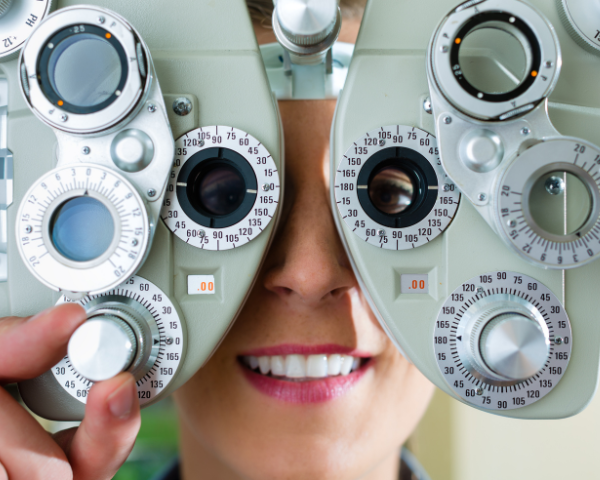What Is the Difference Between Nearsighted and Farsighted?
Difference and symptoms

Nearsightedness, or myopia, results in blurred vision when the light that the eye sees is focused in front of the retina, rather than directly on it. It also occurs when the physical length of the eye is greater than the optical length – the size of your eyes can directly affect your vision. For this reason, nearsightedness often develops in rapidly-growing children or teenagers. As they grow, it can progress even further, requiring frequent changes in glasses or contact lenses.
To summarize, a nearsighted person sees nearby objects clearly, while objects in the distance are blurred.
Symptoms:
- Blurry vision when looking at distant objects.
- The need to squint or partially close the eyelids to see clearly.
- Headaches caused by eye strain.
- Difficulty seeing while driving a vehicle, especially at night.
Nearsightedness is often first detected during childhood and is commonly diagnosed between the early school years through the teens. A child with nearsightedness may:
- Persistently squint.
- Need to sit closer to the television, movie screen or the front of the classroom.
- Seem to be unaware of distant objects.
- Blink excessively.
- Rub their eyes frequently.
Farsightedness, or hypermetropia, is the result of light being focused behind the retina rather than directly on it. It may be caused by the eyeball being too small or the focusing power being too weak. Farsightedness is often present from birth, but children can often tolerate moderate amounts without difficulty and most outgrow the condition. A farsighted person sees faraway objects clearly, while objects that are near are blurred.
To summarize, a farsighted person sees far-away objects clearly, while nearby objects are blurred.
DID YOU KNOW
Nearsightedness is also referred to as shortsightedness,while it’s medical name is myopia.
Farsightedness is the common name for hyperopia, which is sometimes also called hypermetropia.
Symptoms:
- Nearby objects may appear blurry.
- Needing to squint to see clearly.
- You have eye strain, including burning eyes, and aching in or around the eyes.
- You experience general eye discomfort or a headache after doing close tasks, such as reading, writing, computer work or drawing, for an extended period of time.
The best ways to counteract the effects of distance-related vision issues are with high-quality glasses and contact lenses, like the huge range available at SmartBuyGlasses.
If you have an eye condition where you experience myopia and hyperopia, multifocal lenses are required. These lenses can combine multiple prescription powers so you can see both near and far. Bifocal and multifocal lenses can also be useful for conditions such as presbyopia.








































